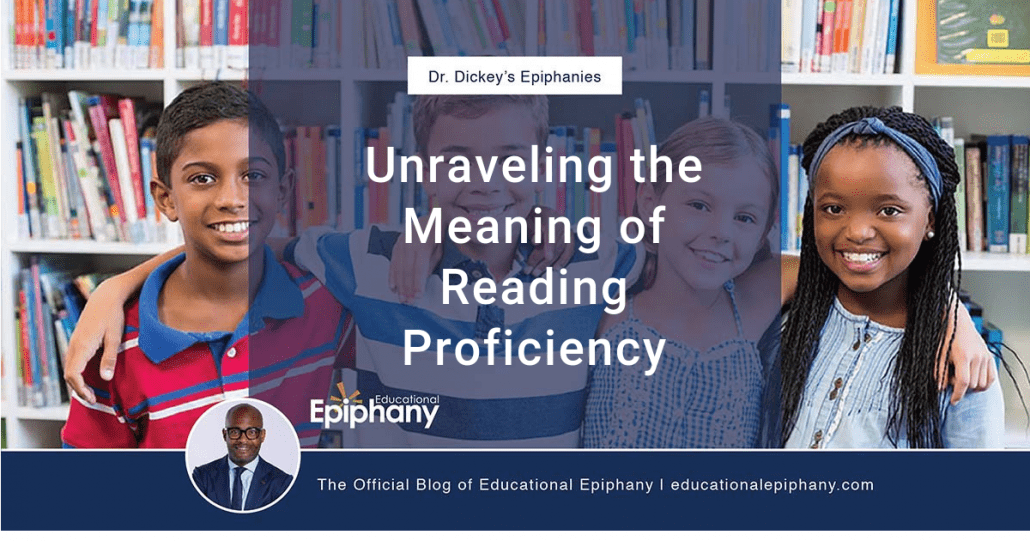Because reading ability by the end of grade 3 has been empirically linked to important adult outcomes, literacy development is a national imperative and must be treated as such.
So the question becomes, what is the foundation of reading proficiency? My response to this critical question can help teachers, teacher leaders, school leaders, curriculum writers, and central office personnel produce educational experiences for children that are worthy of consumption.
The answer is remarkably simple: Decoding + Creating Meaning = Reading.
Students must have diagnostic and prescriptive (needs-based) learning opportunities across the grades and content areas characterized by opportunities to fluently decode and encode. Decoding is defined as understanding the relationship between the smallest unit of writing and the smallest unit of sound; that is, seeing written words and knowing, with automaticity, how to pronounce those words.
Encoding on the other hand, is the inverse. Encoding is defined as understanding the relationship between the smallest unit of sound and the smallest unit of writing. Having the ability to encode means hearing spoken words and, with automaticity, representing that in writing with appropriate letter combinations.
Let’s go back to decoding. To decode fluently, students must also understand the relationship between and among the: (a) 26 letters of the alphabet; (b) 44 phonemes and the seven categories of phonemes (i.e., the 18 single consonant sounds, the seven double consonant digraphs, the five short vowel sounds, the five long vowel sounds, the two other vowel sounds, the two vowel diphthongs, and the five vowel sounds influenced by the letter “r”); and (c) the 144 different ways to represent the phonemes in writing. Although there is some inconsistency in how phonemes are represented by their correlate graphemes, the knowledge needed to be able to decode at developmental expectations is finite and therefore decoding can be taught to mastery.
So how does creating meaning, defined as associating word parts with micro-units of meaning, influence the ability to read fluently?
The ability to read is contingent upon the ability to decode and create meaning on a simultaneous, parallel pathway. Students do not always create meaning with the same level of intensity and accuracy with which they decode, and vice versa. Many students who may appear to be illiterate, aren’t actually illiterate. They may be able to successfully decode (pronounce the words they encounter in text) but have difficulty conceptually understanding the words that they decode.
Reading is not just decoding. Reading is decoding and creating meaning at the same time with similar degrees of accuracy.
Ninety-seven percent of the words that students encounter when they read, irrespective of grade and content area, originate from 30 prefixes, 30 root words, and 30 suffixes. If given access to curriculum-driven opportunities to develop a calibrated understanding of these 90 commonly occurring word parts, students will become better able to create meaning as they read; that is, they will be able to move beyond saying the words on the page to actually understanding the words on the page. As a result, they will be able to read on grade level and beyond.
For example, when properly decoding the word “transportation,” a student pronounces each syllable of the word and blends the syllables into a fluently spoken word when they see it in writing (i.e., trans, por, ta, tion). Creating meaning is completely different pursuit, one that involves a reader’s ability to understand, with automaticity, the meaning of the prefix, root word, and suffix that comprise the word “transportation” (i.e., trans-, port-, -ation). Successful readers decode (pronounce) and create meaning (understand micro-meanings or parts of words) at the same time and rate.
So what is the instructional imperative? What is the leadership imperative? If students must: (a) understand the relationship between the smallest unit of writing and sound and (b) conceptually understand the micro-meanings or word parts to read at developmentally appropriate levels, then we as educators must strengthen the knowledge and capacity of our students’ instructional ecosystem to produce a “learning to read” teaching and learning experience worthy of consumption.
Donyall D. Dickey, Ed.D. is the lead author for Scholastic Literacy and Chief Executive Officer of Educational Epiphany. For more, follow him on Twitter @DonyallD.

